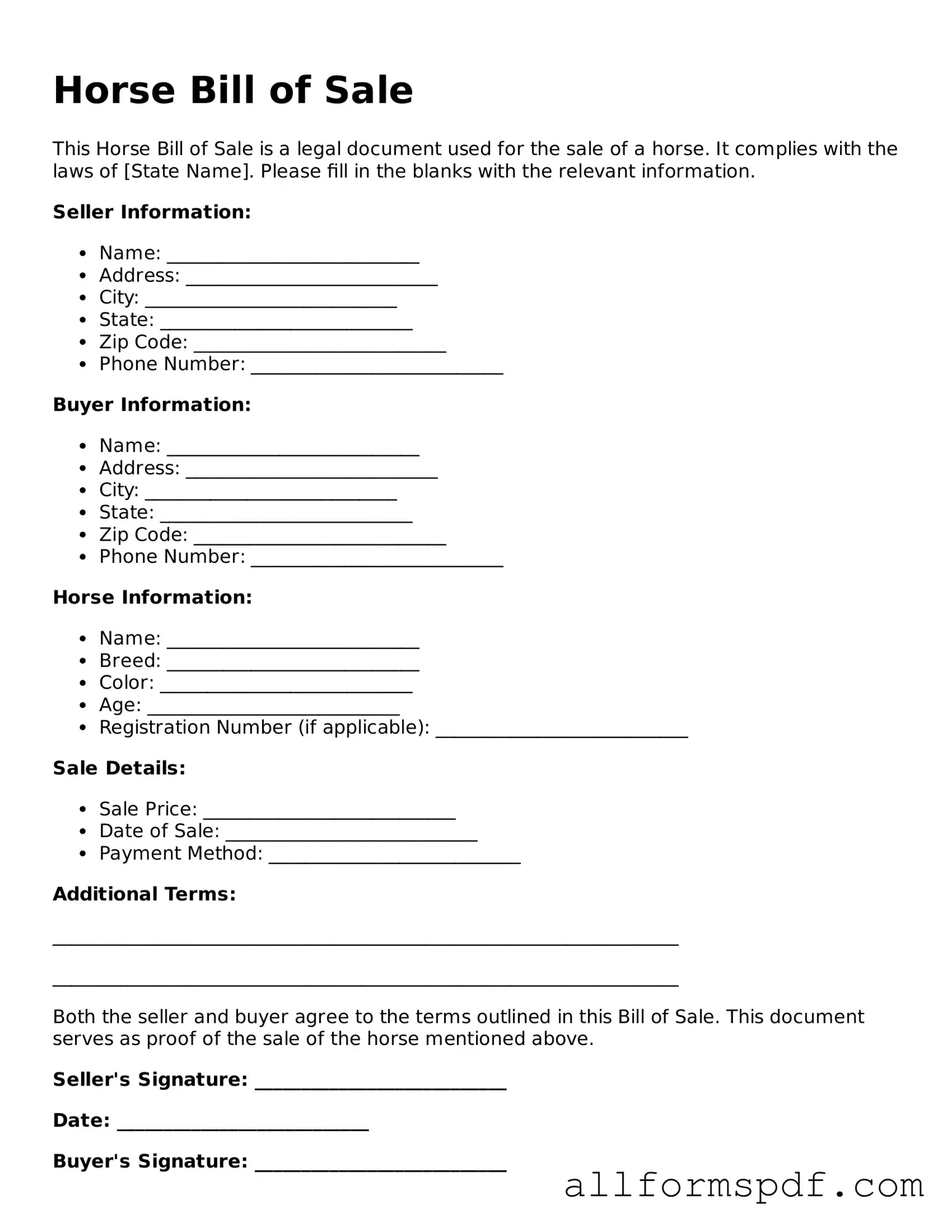When completing a Horse Bill of Sale form, individuals often overlook important details, leading to potential complications. One common mistake is failing to provide accurate identification for the horse. This includes not including the horse's name, breed, age, color, and any unique markings. Without this information, it may become difficult to prove ownership or resolve disputes in the future.
Another frequent error involves the omission of the seller's and buyer's contact information. Both parties should ensure that their names, addresses, and phone numbers are clearly stated. This information is crucial for any future communication regarding the horse, especially if issues arise after the sale.
Many people also neglect to include the sale price. While it may seem obvious, stating the agreed-upon price is essential for record-keeping and legal purposes. Without this detail, misunderstandings about the transaction can occur, leading to disputes between the buyer and seller.
In addition, some individuals fail to specify whether the horse is being sold “as is” or with any warranties. Clearly stating the condition of the horse and any guarantees can protect both parties. If the horse has known issues, these should be disclosed to avoid future liability.
Another mistake is not having the form signed by both parties. A Horse Bill of Sale is only valid when both the seller and buyer sign it. This signature confirms that both parties agree to the terms outlined in the document.
People often forget to date the form. The date of the sale is important for establishing a timeline of ownership. Without a date, it may be challenging to resolve any disputes or questions regarding the transaction later on.
Additionally, individuals may overlook the importance of keeping a copy of the completed form. Both the buyer and seller should retain a copy for their records. This documentation serves as proof of the transaction and can be useful in case of any future legal issues.
Lastly, some may not seek legal advice when necessary. While a Horse Bill of Sale is relatively straightforward, consulting with a legal professional can help ensure that all necessary elements are included and that the document is legally sound. This step can prevent potential problems down the line.
